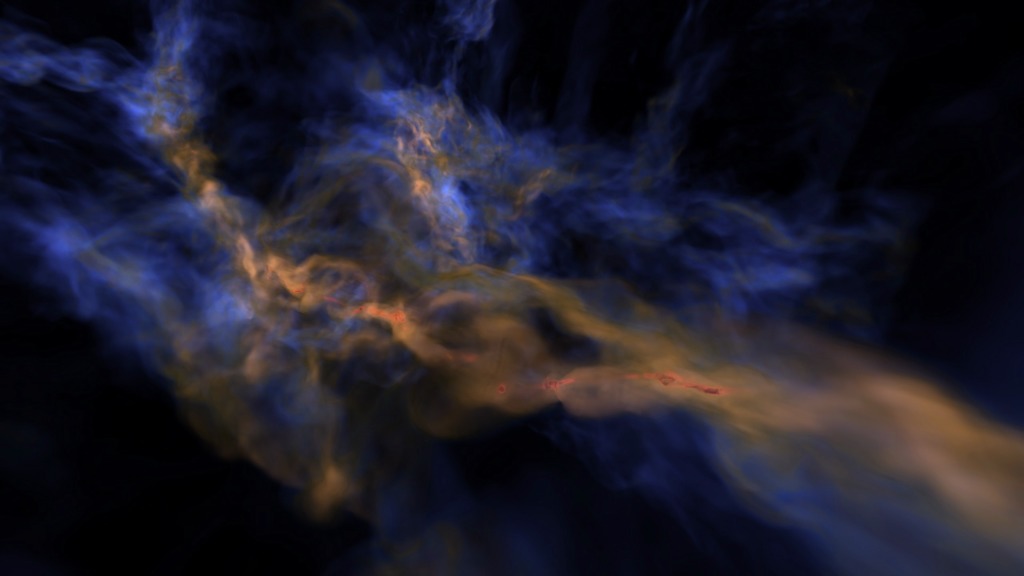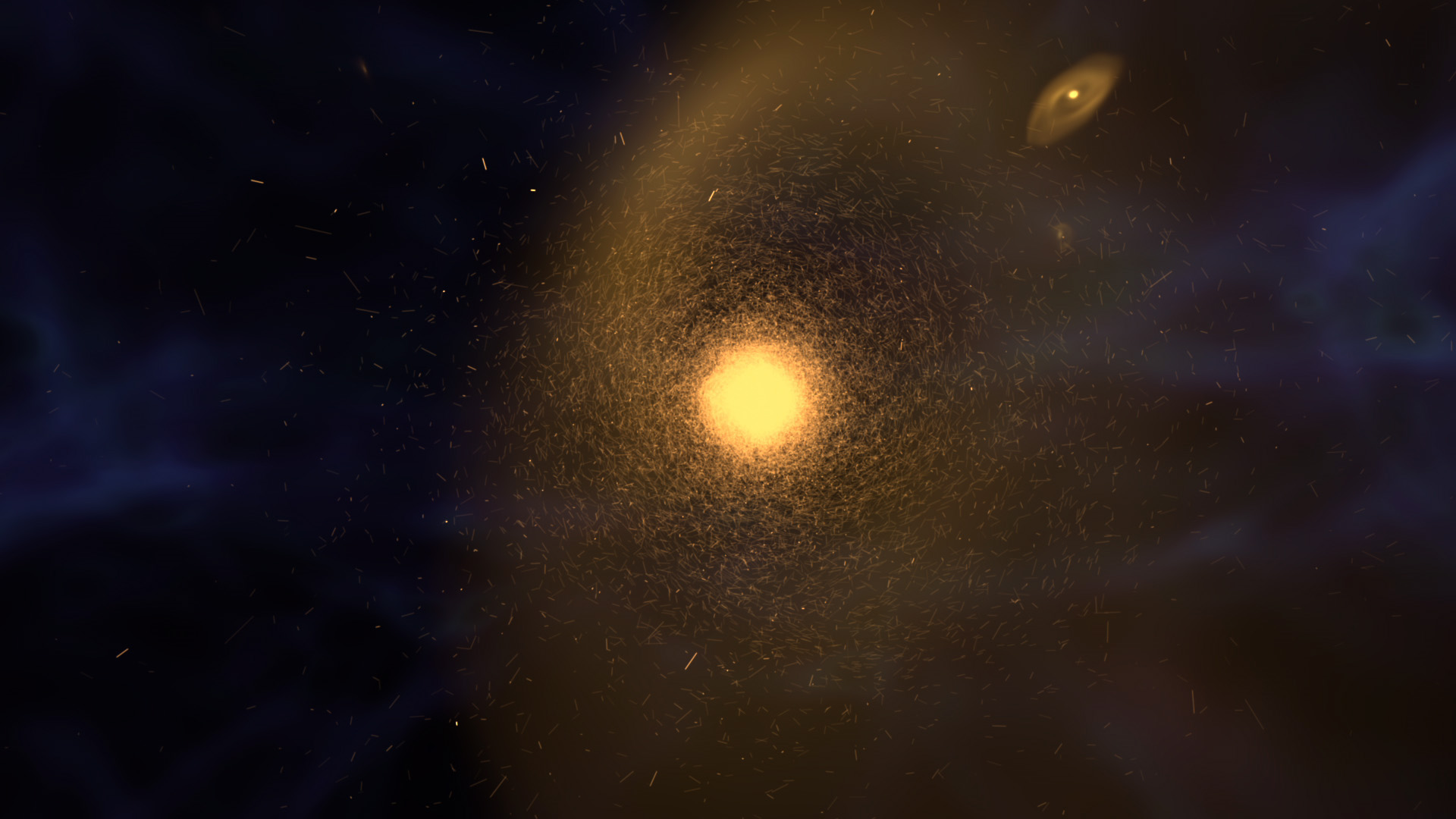JWST Science Simulations: Galaxy Formation
Supercomputer Simulations of Galaxy Formation and Evolution.
This visualization shows small galaxies forming, interacting, and merging to make ever-larger galaxies. This 'hierarchical structure formation' is driven by gravity and results in the creation of galaxies with spiral arms much like our own Milky Way galaxy. The Adaptive Mesh Refinement (AMR) simulation generated from ENZO code for cosmology and astrophysics was developed by Drs. Brian O'Shea and Michael Norman. The AMR code generated 1.8 terabytes of data and was computed at NCSA. AVL used Amore software (http://avl.ncsa.illinois.edu/what-we-do/software) to interpolate and render 2700 frames (42 gigabytes of HD images). The simulation spans a time period of 13.7 billion years. This visualization provides insight into the assembly and formation of galaxies. James Webb Space Telescope (JWST) will probe the earliest periods of galaxy formation by looking deep into space to see the first galaxies that form in the universe, only a few hundred million years after the Big Bang.
The Advanced Visualization Laboratory (AVL) at the National Center for Supercomputing Applications (NCSA) collaborated with NASA and Drs. Brian O'Shea and Michael Norman to visualize the formation of a Milky Way-type galaxy.
The Adaptive Mesh Refinement (AMR) simulation generated from ENZO code for cosmology and astrophysics was developed by Drs. Brian O'Shea and Michael Norman. The AMR code generated 1.8 terabytes of data and was computed at NCSA. AVL used Amore software (http://avl.ncsa.illinois.edu/what-we-do/software) to interpolate and render 2700 frames (42 gigabytes of HD images). The simulation spans a time period of 13.7 billion years. This visualization provides insight into the assembly and formation of galaxies. James Webb Space Telescope (JWST) will probe the earliest periods of galaxy formation by looking deep into space to see the first galaxies that form in the universe, only a few hundred million years after the Big Bang.
AVL(http://avl.ncsa.illinois.edu/) at NCSA (http://ncsa.illinois.edu/), University of Illinois (www.illinois.edu)
JWST Science Simulations: Galaxy Evolution wideshot. This visualization shows small galaxies forming, interacting, and merging to form Milky Way-type galaxies with spiral arms.
JWST Science Simulations: Galaxy Evolution tracking shot 1. This visualization shows small galaxies forming, interacting, and merging to form Milky Way-type galaxies with spiral arms.
JWST Science Simulations: Galaxy Evolution Tracking Shot 2. This visualization shows small galaxies forming, interacting, and merging to form Milky Way-type galaxies with spiral arms.
Credits
Please give credit for this item to:
NASA/Goddard Space Flight Center and the Advanced Visualization Laboratoy at the National Center for Supercomputing and B. O'Shea, M. Norman
-
Animators
- Donna Cox (AVL NCSA/University of Illinois)
- Robert Patterson (AVL NCSA/University of Illinois)
- Matthew Hall (AVL NCSA/University of Illinois)
- Stuart Levy (AVL NCSA/University of Illinois)
-
Producers
- Michael McClare (HTSI)
- Donna Cox (AVL NCSA/University of Illinois)
-
Scientists
- Brian O'Shea (Michigan State University)
- Michael Norman (University of California, San Diego)
Missions
This page is related to the following missions:Series
This page can be found in the following series:Tapes
The media on this page originally appeared on the following tapes:-
JWST Media Resource Reel 2010
(ID: 2010014)
Friday, May 28, 2010 at 4:00AM
Produced by - Clay Anderson (NASA) -
JWST Science Animations
(ID: 2010070)
Saturday, May 29, 2010 at 4:00AM
Produced by - Clay Anderson (NASA)
Release date
This page was originally published on Monday, November 1, 2010.
This page was last updated on Monday, January 6, 2025 at 1:14 AM EST.

